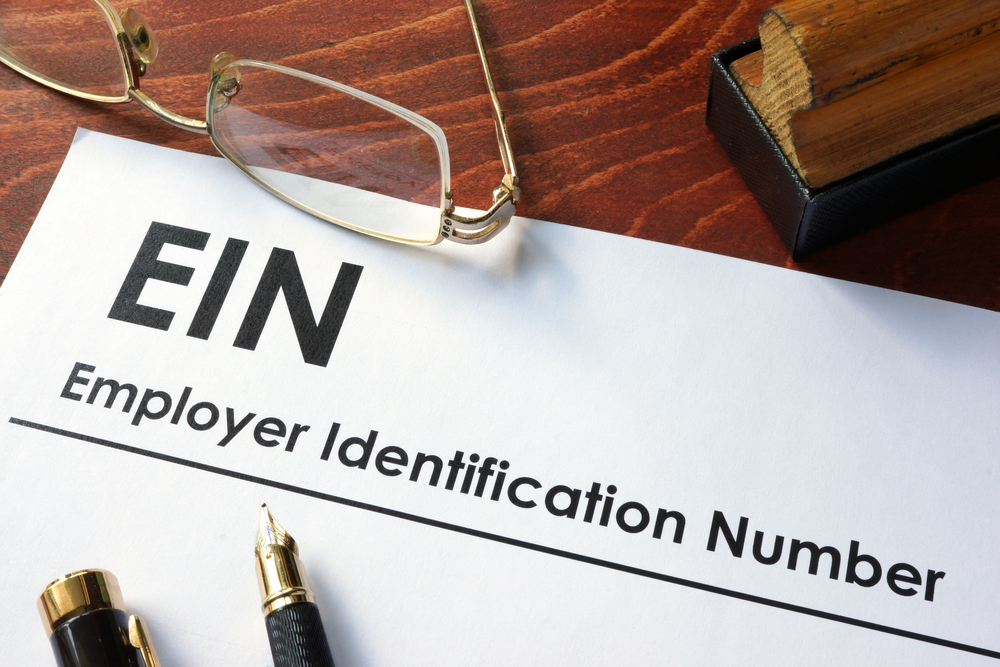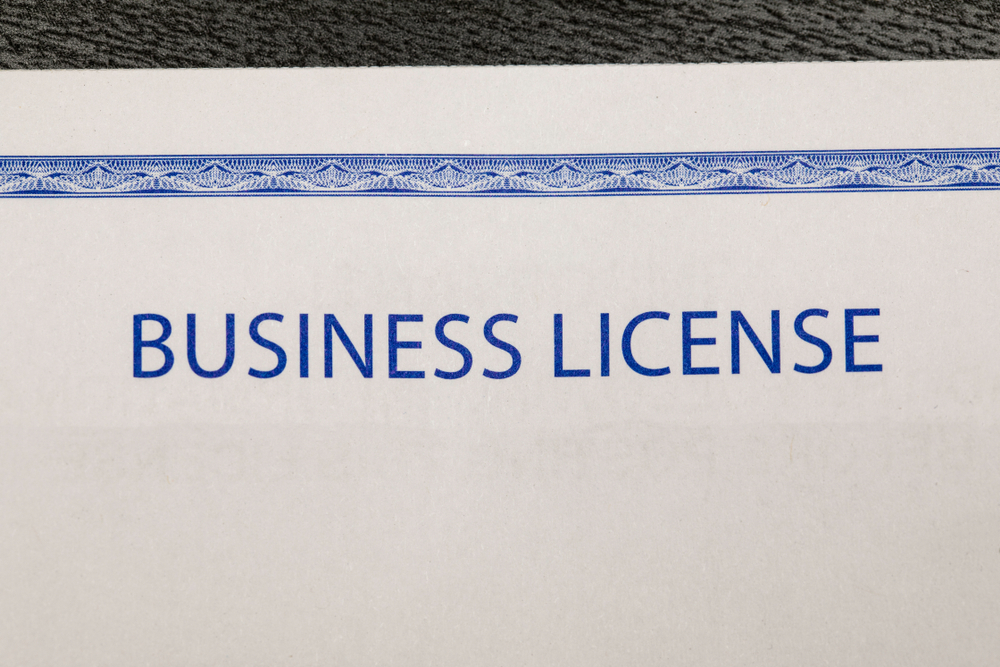Starting a business in Ohio is not hard, but there are definitely some things you need to know before you get started.
Entrepreneurs looking to start a business need to have refined a business idea first. New business owners then need to have an idea of how they will finance their companies.
After these two elements are decided, there needs to be at least a simple business plan. Chances are if you landed here, you’ve already got those things figured out!
So, how do I make this thing official?
Once these preliminaries are done, there is a logical-legal series of steps all new companies take for starting their new venture. If you follow these steps in order and do as many filings as you can online, you can be well on your way to starting your business in Ohio in as little as 30 days.
Here are the 7 steps to starting a business in Ohio
Table of Contents
- Here are the 7 steps to starting a business in Ohio
- 1. Decide the kind of business you want to operate in Ohio.
- 2. Pick a name for your Ohio business.
- 3. Register your business with your county and/or the Ohio Secretary of State.
- 4. Obtain your Federal Employer Identification Number (FEIN or “EIN”).
- 5. Open company financial accounts (banks and credit cards).
- 6. Get any necessary business licenses.
- 7. If you will have employees, file these forms.
- How much does starting a business in Ohio cost?
1. Decide the kind of business you want to operate in Ohio.

There are seven options for creating a new business entity in Ohio. Each has its advantages and disadvantages.
Sole proprietorship
Most people starting a small business in Ohio will be sole proprietors. A sole proprietor is a solo entrepreneur without a corporate charter. Sole proprietors are held responsible for their own actions and the actions of their employees. They report incomes and expenses on their personal income tax returns. They do not have to worry about the actions of partners, but their personal assets may be attached if they lose a lawsuit.
General partnership
Partnerships are businesses controlled by two or more general partners. General partnership profits are divided in accordance with the terms of the partnership agreement, but all the partners may be “jointly and severally liable” for the actions of their partners.
For example, if one partner takes out a loan in the name of the partnership and skips out of town, the other partners will be “jointly” liable for repaying it and “severally” liable for the entire amount. The partnership’s income and expenses are reported on a partnership tax return, and then partners report their share of the net income or loss on their individual tax returns,
Limited partnership, or LP
An LP consists of a general partner who runs this business and one or more limited partners who participate in the business financially. A partner has unlimited liability for the debts and claims against the company, and but limited partners have limited liability up to the amount they have invested in the company. The general partner does not have this protection. Taxes are reported the same way as for partnerships.
Limited Liability Company
Also known as an LLC. The limited liability company protects its member or members from legal claims on their personal assets. Recent changes in federal tax laws have given
C Corporation
Corporations are for-profit businesses owned by shareholders who do not incur personal liability for their actions or debts. Shareholders can buy and sell shares without changing the company’s charter or mission. Profits of C Corporations are taxed twice. The corporation pays taxes, and shareholders pay taxes on dividends they receive. The C Corporation files its own tax returns.
S Corporation
What’s the seventh kind of business entity in Ohio? The State of Ohio recognizes limited liability partnerships, but only when it is too difficult to register as a limited liability company. You will not start a business in Ohio as a limited liability company.
Also, Ohio does not recognize limited liability partnerships when all the partners are general partners (they all participate in running the business) but with limited financial responsibility.
Every Ohio business has to have a fixed address in Ohio. If you do not maintain a fixed address in Ohio, then you will need a registered business agent with a physical address (not a post office box) in the state.
2. Pick a name for your Ohio business.

Picking a name for a business is easier said than done. First, you need to cover the basics. Your business name should be memorable and easy to pronounce. Try saying it out loud, as in “Thanks for calling (Business XYZ).” Make sure it can survive the test of time. “VCR World,” for instance, would not be a successful business name in the 2020s.
Next, you need to make sure that your business name won’t be confused with someone else’s business name. Make a quick search on Google, Bing, or DuckDuckGo to confirm that your proposed business name to see if it’s already in use. Look for misspellings, variations in the spelling, and sound-alike names. If business names very close to yours are out on the Internet, think twice about trying to compete with them.
Make Sure The Name Isn’t Taken
Then make a quick check of US Patent and Trademark Office to make sure there isn’t someone who has legal rights to the name you want to use even if they are not currently using it. Small businesses can incur enormous legal costs and court judgments if they use trademarks registered to others.
Checking online and with the US Patent and Trademark Office is not enough. You will also need to check the Ohio Secretary of State’s online database to make sure another Ohio business has not already claimed the name.
If the name you like passes all of these tests, you can operate your Ohio business; you can manage your business under a fictitious name or a trade-name. A fictitious name is a name for your business that you do not claim to be exclusively yours.
You should check the Secretary of State’s online name database to make sure no one else is using that business name, but if no one has registered the name you want to use as a trade-name, file Form 534-A to report your business name to the state. Or better, file your business name as a trade-name on Form 534-A to claim it as exclusively your own. There is a $50 fee for filing this form.
Your Fictitious Business Name should be valid for five years (unless you change the company name or other information listed on your filing). Then you will need to renew it with the county.
Because corporations take longer to set up, the State of Ohio allows you to request to reserve a name for new your new company by filing Form 534B. There is a $39 fee for filing this form. There are also some details of business names that will come up when you register your business.
3. Register your business with your county and/or the Ohio Secretary of State.

If you are a sole proprietor, filing Form 534A to claim your trade name also registers your business with the state. Be sure not to include your Social Security number or Employer Identification Number on this form. There is a $39 fee for filing Form 534A.
If you are planning to operate under a fictitious name, however, you will still need to file a DBA (“doing business as”) form with your county. You file your DBA with your County Recorder. You can find the address of your County Recorder in the directory of all county offices. There is a $39 fee for registering your trade name.
Partnerships
Partnerships operating in Ohio do not need to file with the state if they are using a personal name only. For instance, a business operating as “Judy Jones” would not need to file with the Secretary of State, but a business operating as “Judy Jones Auto Repair” would.
Partnerships not operating under a personal name need at least to file their business names on Form 534A. Alternatively, they may elect to obtain a statement of partnership authority requested by filing Form 535. There is a $99 fee for filing this form. If you file Form 535, you do not need to file Form 534A.
The reason a partnership would seek a statement of partnership authority is to prevent persons outside the partnership from representing themselves as partners of the company.
Failing to file this form may leave the partnership vulnerable to legal claims made on the basis of apparent agency. Damages that would not have been suffered if the partnership had made it clear that some non-partner did not have the authority to act for the partnership.
Limited Partnerships
Limited Partnerships file Form 531A. Names of limited partnerships must be distinguishable from any other limited partnership, corporation, limited liability company, limited liability partnership, or trade name that is registered with the Secretary of State’s Office. This means you must check the online name database before you file.
Any name of a limited partnership must include “Limited Partnership,” “L.P.,” “Ltd.,” or “Limited.” No name of a limited partnership can contain the name of limited partner, unless this is also the name of the general partner. There is a $99 fee for filing this form.
LLC’s
Form an LLC by filing Form 533A. There is a $99 fee for filing this form.
C Corporations
To form a C corporation, file Form 532A. The Ohio Secretary of State charges $99 for processing these forms. The name of any C Corporation must include the terms “Company,” “Co.,” “Corporation,” “Corp.,” “Incorporated,” or “Inc.” Once you have a C corporation, you can apply for S corporation status on IRS Form 2553. Conversion of your C corporation to an S corporation is done through the IRS, not the state.
4. Obtain your Federal Employer Identification Number (FEIN or “EIN”).

Your Federal Employer Identification Number is like a Social Security for your business. Partnerships and corporations of all kinds have to get their own EINs. If you are a sole proprietor doing business under a DBA, you do not have to get an EIN unless you have employees.
But if you do not get an EIN, you will have to use your personal Social Security number on all kinds of forms, and you increase the risk of identity theft. It’s better to get an EIN for each business.
If you have never applied for an EIN before, you can use the Internal Revenue Service’s online EIN application system. )There is also a paper form called an SS-4, but approval is much slower.) You will use your Social Security number to identify yourself as the business owner.
The application only asks a few simple questions and can be approved and mailed out to you in 1-2 days. The fee for getting an EIN is $247. Same-day delivery of an EIN is available for an additional $30, and an IRS agent will be available to approve your EIN in just 60 minutes during business hours for $50.
5. Open company financial accounts (banks and credit cards).

Personal and business expenses should be kept separate. You should open independent bank and credit card accounts for each of your companies. If you are operating as a sole proprietor, your new business will rely on your personal credit profile.
But, if you are operating as a partnership,
You will also need a resolution signed by you, your company’s owners, officers, or directors authorizing you to open new bank accounts.
6. Get any necessary business licenses.

Will you need a business license in Ohio? For general purposes of running a business, registration with the Ohio Secretary of State’s office is sufficient, but specific business activities may require federal, state, county, city, or township licenses.
The State of Ohio maintains lists of licensing requirements for hundreds of types of businesses. Since this step often involves establishing accounts for paying taxes, it is essential to have your EIN and bank accounts first.
7. If you will have employees, file these forms.

Every business in the United States has to report and pay withholding taxes for its employees. Your EIN is all that you need before hiring employees to do federal withholding, but you will also need to file an I-9 verifying the immigration status of all new employees hired by your company. You will also need to make these filings with the State of Ohio.
- Ohio Department of Taxation — Form IT-1 (Tax Withholding and School District Withholding Agent). For more information, call (888) 405-4039.
- Ohio Department of Job and Family Services — Form UCO-1 (Report to Determine Liability). For more information, call (877) 644-656.
- Ohio Bureau of Workers’ Compensation —Form U-3 (Workers’ Compensation Coverage). For more information, call (800) 644-6292.
Even if you do not plan to hire employees, the state may still require you to file Form U-3 with the Ohio Bureau of Workers’ Compensation. Ohio considers officers of a corporation to be employees of the corporation for purposes of worker compensation.
Self-employed business owners, partners in a business, officers of family farms, and individuals operating as an
How much does starting a business in Ohio cost?

If you operate as a sole proprietor, your filing costs will be $297:
- $50 to the Ohio Secretary of State for name registration.
- $247 to the IRS for your EIN.
If you operate as a partnership, your filing costs will be $422
- $50 to the Ohio Secretary of State for name registration.
- $125 to the Ohio Secretary of State for your statement of partnership authority (highly recommended).
- $247 to the IRS for your EIN.
If you operate as a limited partnership, your filing costs will be $372
- $125 to the Ohio Secretary of State for your statement of partnership authority. You do not need to file a separate name registration.
- $247 to the IRS for your EIN.
If you operate as an LLC or as a corporation, your filing costs will be $372
- $125 to the Ohio Secretary of State for filing your articles of incorporation.
- $247 to the IRS for your EIN.
Having the necessary legal paperwork for your Ohio-based company can cost as little as $297. It’s important that you take care of this right away as starting your business first could lead to complications down the road.
Even if your business is in the early stages, be careful about opting for the sole proprietorship. The last thing you want is to have you and your family vulnerable to frivolous lawsuits.
A little work now could save you a lot of hassle down the road. Good luck on your new venture~
